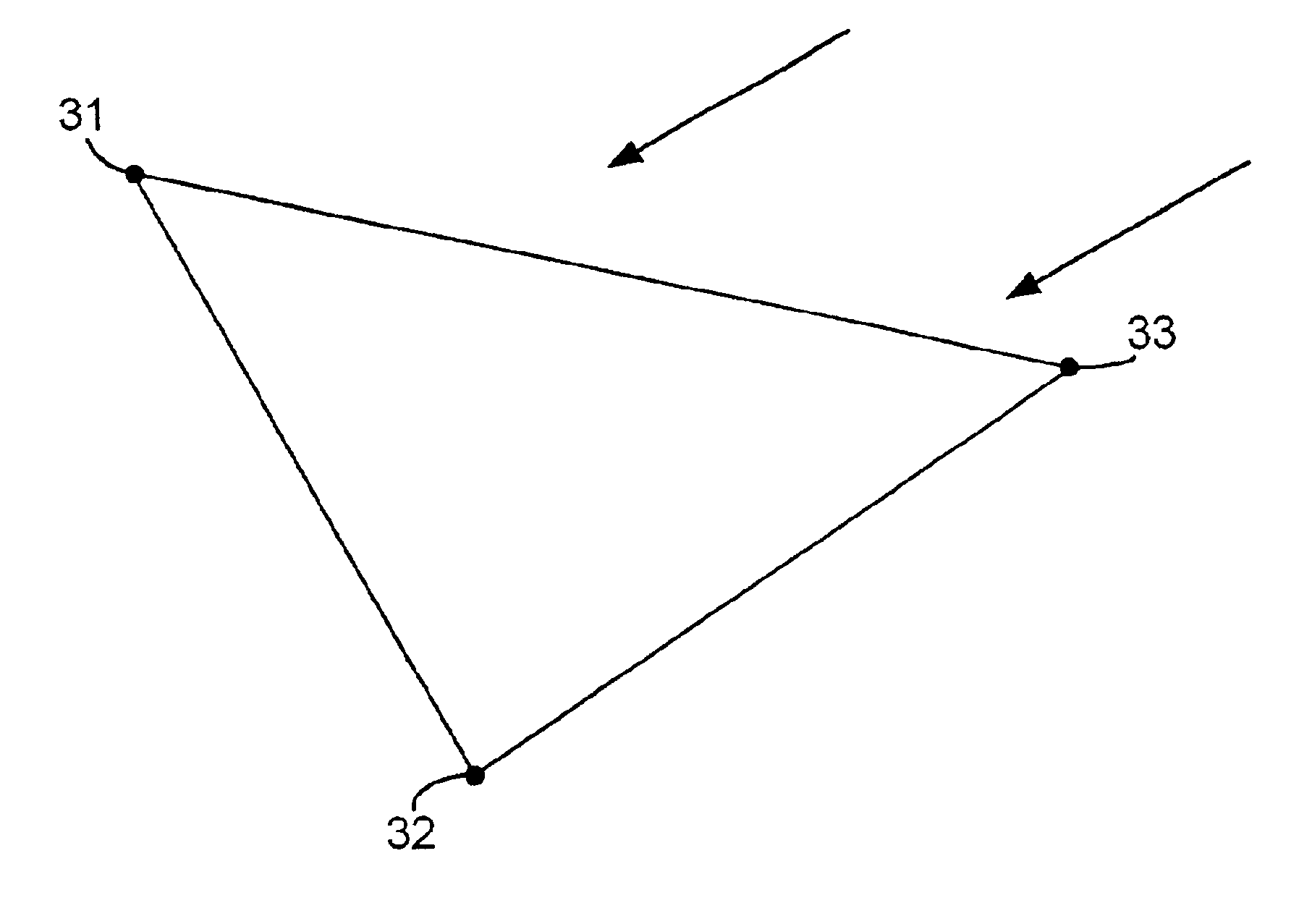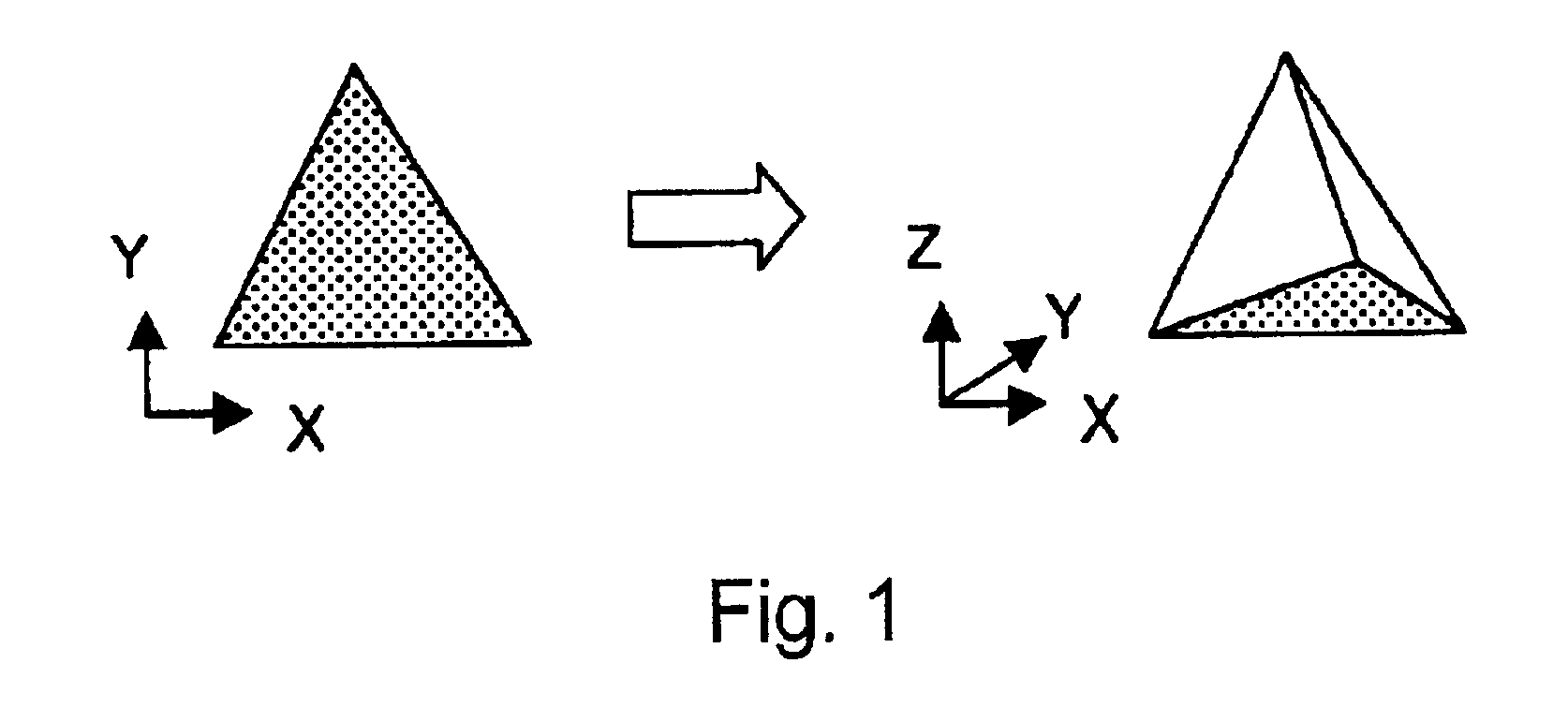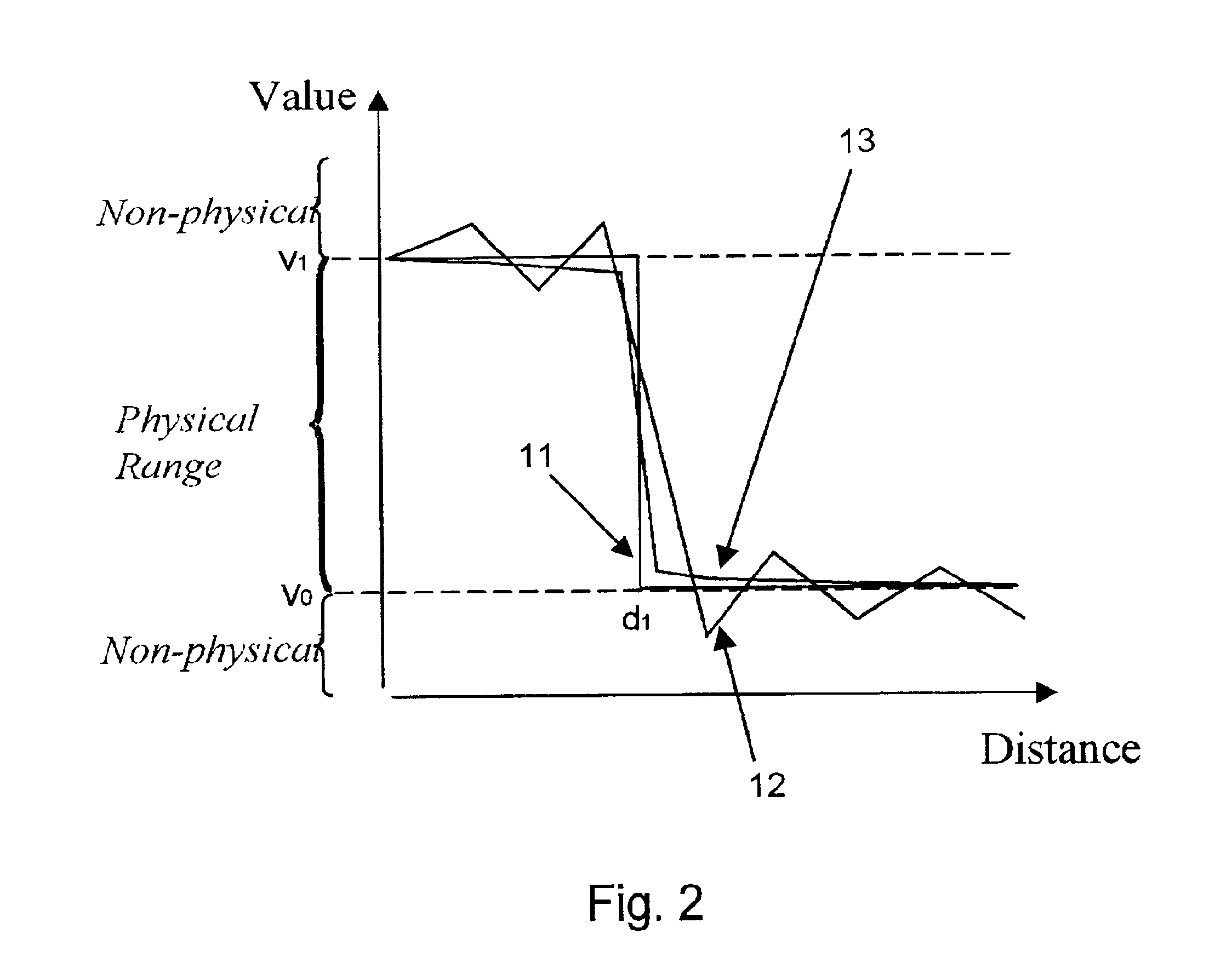Method and system for solving finite element models using multi-phase physics
a multi-phase physics and finite element technology, applied in the direction of instruments, analogue processes for specific applications, electric/magnetic computing, etc., can solve the problems of less accurate, less accurate, and physical realistic results of finite difference techniques
- Summary
- Abstract
- Description
- Claims
- Application Information
AI Technical Summary
Benefits of technology
Problems solved by technology
Method used
Image
Examples
Embodiment Construction
[0023]A preferred embodiment of the invention is described below. It should be noted that this and any other embodiments described below are exemplary and are intended to be illustrative of the invention rather than limiting.
[0024]Broadly speaking, the invention comprises methods for solving finite element models, wherein the solution is guaranteed both to be monotonic and to satisfy linearity preservation. This ensures that the solution will be both accurate and realistic. The monotonicity and the linearity of the solution are ensured by generating a matrix for the solution of the finite element model such that the elements of the matrix which are on the diagonal are non-negative, and the elements which are off-diagonal are non-positive. This matrix can then be solved using conventional finite element techniques to generate the desired accurate, realistic solution.
[0025]The present methods provide a number of advantages over traditional finite element and finite difference techniqu...
PUM
 Login to View More
Login to View More Abstract
Description
Claims
Application Information
 Login to View More
Login to View More - R&D
- Intellectual Property
- Life Sciences
- Materials
- Tech Scout
- Unparalleled Data Quality
- Higher Quality Content
- 60% Fewer Hallucinations
Browse by: Latest US Patents, China's latest patents, Technical Efficacy Thesaurus, Application Domain, Technology Topic, Popular Technical Reports.
© 2025 PatSnap. All rights reserved.Legal|Privacy policy|Modern Slavery Act Transparency Statement|Sitemap|About US| Contact US: help@patsnap.com



